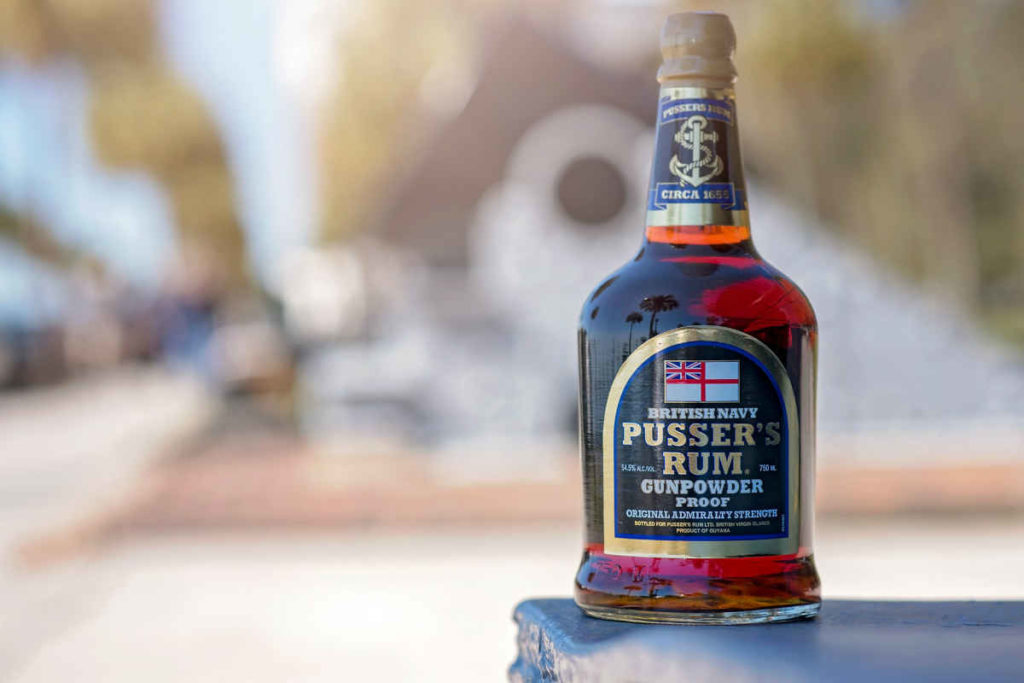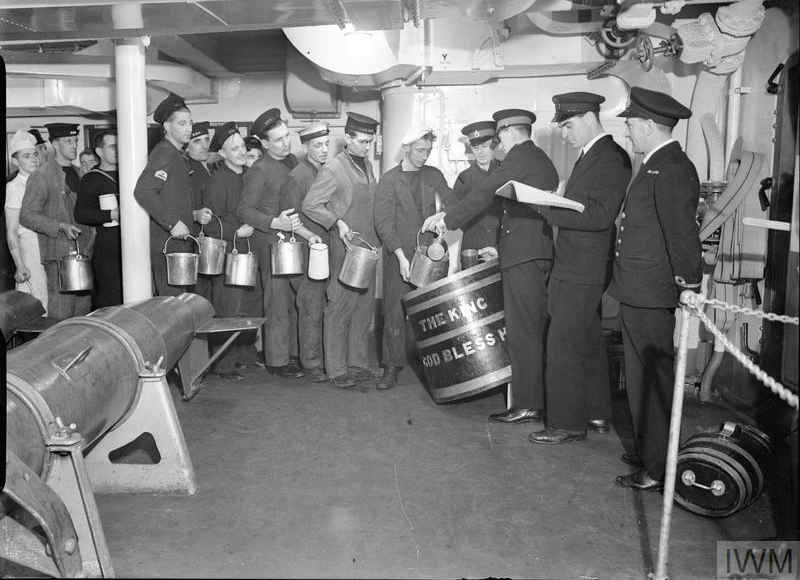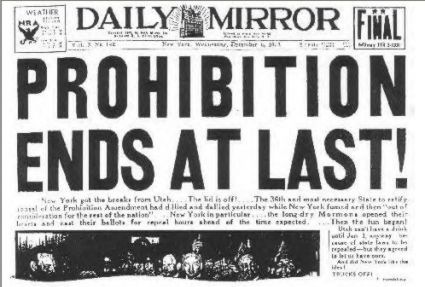A rum-writer friend once submitted a form asking what holidays his family celebrates. With only a hint of irony, he included “Black Tot Day.” For rum enthusiasts, July 31 is among the most sacred yet secular holidays. It’s a day to bring out their navy rum stash and regale unsuspecting strangers with stories of grog tubs and soaking gunpowder in rum to test if it still explodes. I wholeheartedly participate in such shenanigans but have a somewhat different tale to tell.
To briefly recap the traditional Black Tot Day narrative, life at sea for a sailor in the 1700s was a miserable existence. To help keep crews from committing mutiny, the British navy served a daily ration of navy strength rum (57% ABV) diluted with water and known as grog. That tradition started in 1655 and lasted until July 31, 1970. That day was mourned with mock funerals on British Navy ships around the globe.
That’s the tale most people tell and believe. But many elements of it are… inaccurate, to be charitable. Let’s remedy some of that now.
The Real Story
In the 1600s and 1700s, ships on long voyages carried copious amounts of drinkable liquids in wooden casks. Water, beer, and wine, especially in tropical conditions, went bad within a matter of weeks. However, distilled spirits with a much higher alcohol content lasted almost indefinitely. Thus, before setting sail, the navy stocked their vessels with many puncheons of high strength brandy.
Wait, brandy?
Yes. brandy was around long before Caribbean rum came about until the mid-1600s. Even when rum was available, brandy was still much cheaper for the British navy. France’s coastline is swimming distance from England, whereas rum had to be transported thousands of miles by boat to England. In the early years of British naval dominance, sailors were more often fortified by the grape than the cane.

It wasn’t until 1806 that the British navy selected rum as their sole spirit, and only under pressure from British merchants who owned Caribbean rum-making estates. The Napoleonic wars may also have had some influence on the decision.
Now, about that daily ration, also known as a “tot”: Most recountings say it started in 1655. While it’s likely that sailors in Jamaica that year received rum, it was by no means a daily thing for the entirety of the navy. Captains decided when to issue a ration, and it might have been beer, wine, or brandy—whatever was available.
It wasn’t until 1731 that the navy decreed an official daily tot (ration) of spirit—eight imperial ounces of overproof rum—when beer wasn’t available. Not surprisingly, it took only nine years of drunken hijinks for Admiral Edward Vernon, aka “Old Grog,” to declare that the issued rum would be diluted with four parts water, making it approximately wine strength.
Thus, the daily ration ceremony on the ship’s deck started. While sailors watched, a carefully measured out amount of rum went into a wooden grog tub for dilution prior to distribution. Little known fact: Higher ranking officers took their ration “neat” or undiluted. However, their ration privilege went away in 1881.
Speaking of diluted rum, rum onboard ships had already been diluted once prior to the daily ration. The navy purchased rum from “Empire sources” (primarily Guyana and Trinidad, and rarely Jamaica) at around 80% ABV. What they issued to ships was navy strength: 54.5% ABV.

You might notice this strength differs from 57% ABV “navy strength” rums. Naval documents make it very clear that after 1866, issuing strength was “4.5 degrees under proof,” i.e. 54.5% ABV. Tests of actual naval rum in stone flagons corroborate this. In short, 57% ABV is not “navy strength.” A full explanation of the history and math is here.
Regardless of the alcoholic strength, tipsy sailors are in no position to control battleships. From the late 1800s on, temperance movements swept through the navy, and many sailors skipped their rum ration for extra pay. Senior navy officials (who weren’t getting tots themselves) tried for many decades to end the daily tot. Finally, on Dec. 17, 1969, First Sea Lord Sir Michael Le Fanu ordered that after August 1, 1970, the daily rations would end. In its place, sailors were allowed to purchase three cans of beer daily.
While the daily tot ceased 50 years ago, today’s sailors may still receive a ration on important occasions, such as a royal birth or a wedding. The Royal Family and the Admiralty can still issue a “Splice the Mainbrace” celebratory order, meaning a tot issuance. However, these days any distilled spirit will do.
Rums to Celebrate Black Tot Day
In terms of adherence to real navy rum flavor profile, it’s hard to beat actual navy rum. Elixir Distillers purchased numerous flagons of actual British navy rum made prior to 1970 and blended them to make Black Tot: The Last Consignment. It’ll cost you about $800 for a bottle, but that’s the price of liquid history.

For a bit less, Elixir Distillers also offers Black Tot Finest Caribbean Rum. It doesn’t hew exactly to the navy’s blend profile and components, but still hits the target profile of a late-era navy rum.
The other claimant to navy rum authenticity is Pusser’s. The name refers to a ship’s Purser, the officer who issued the rum. In 1979, an American sailor named Charles Tobias struck a deal with the British admiralty. They provided him with their secret recipe for rums they used. In exchange, and to this day, Pusser’s contributes a portion of its profits to the navy’s Sailor’s Fund charity.
The ideal Pusser’s expression to celebrate Black Tot Day is Pusser’s Gunpowder proof, bottled at navy strength: 54.5% ABV. There’s also a lower strength “Blue Label” rum.
Both Pusser’s and Elixir have limited edition Black Tot 50th Anniversary expressions. The Pusser’s isn’t for sale in the U.S., but the Black Tot 50th Anniversary Edition will hit U.S. shelves later this year.



